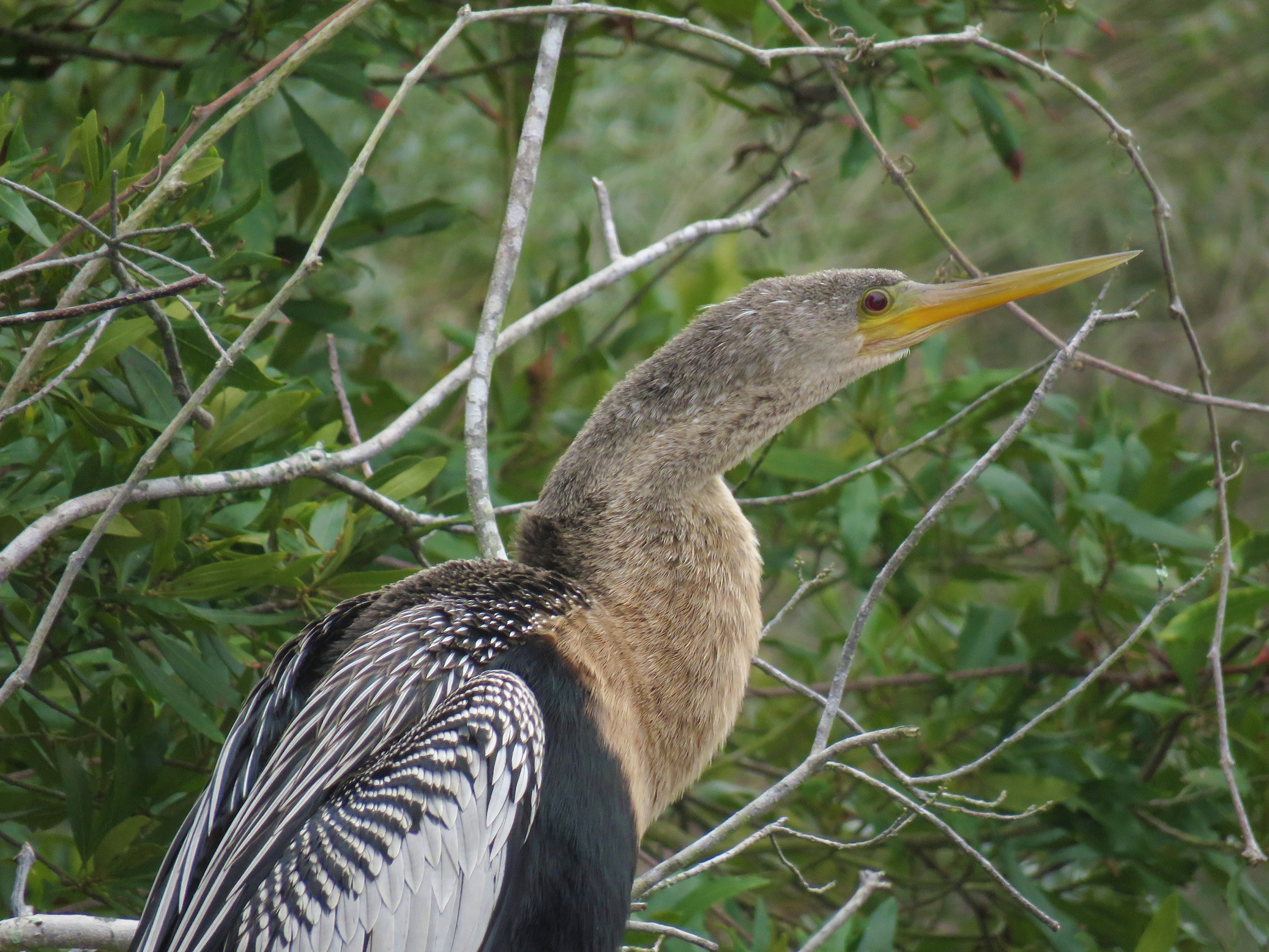
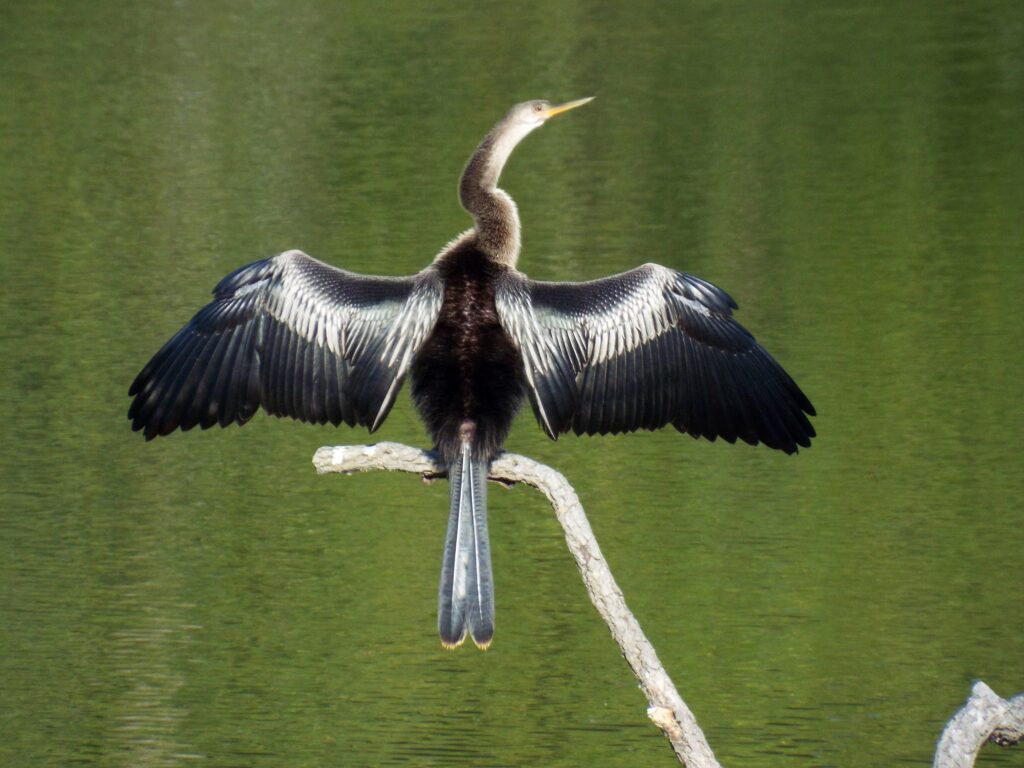
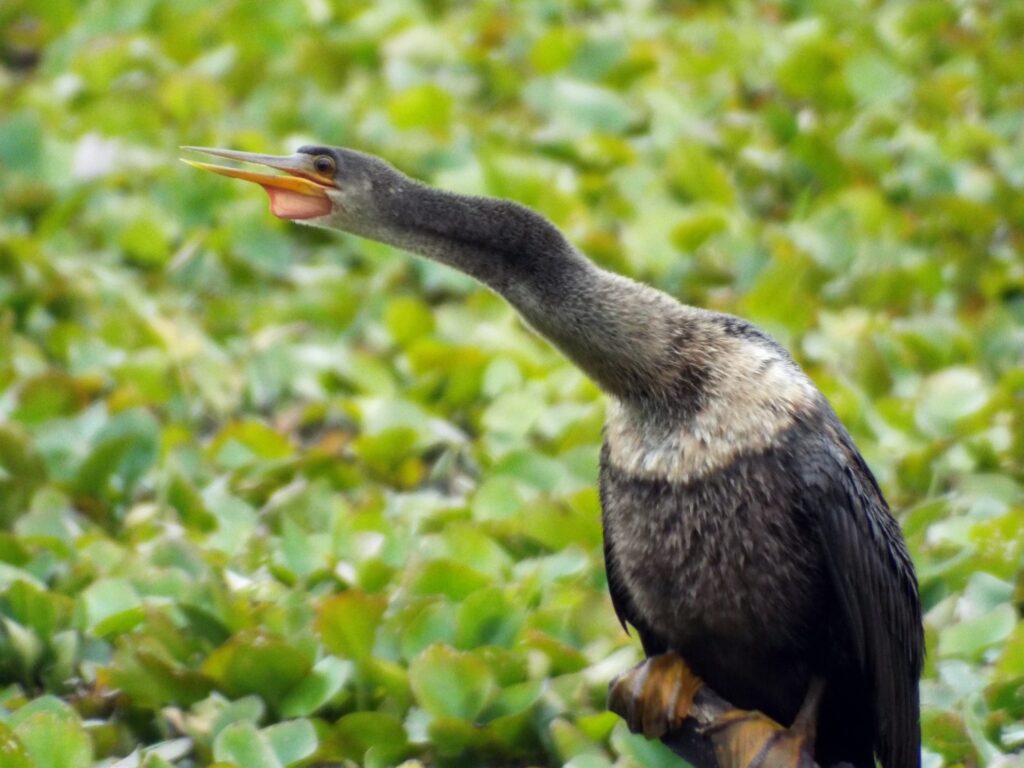
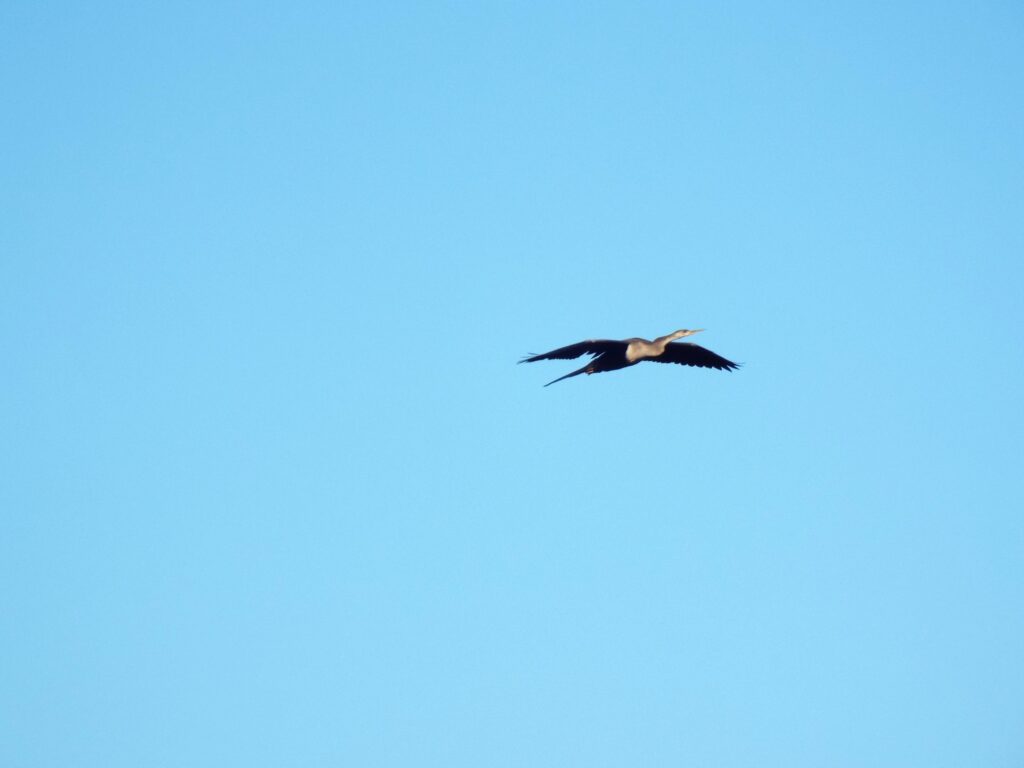
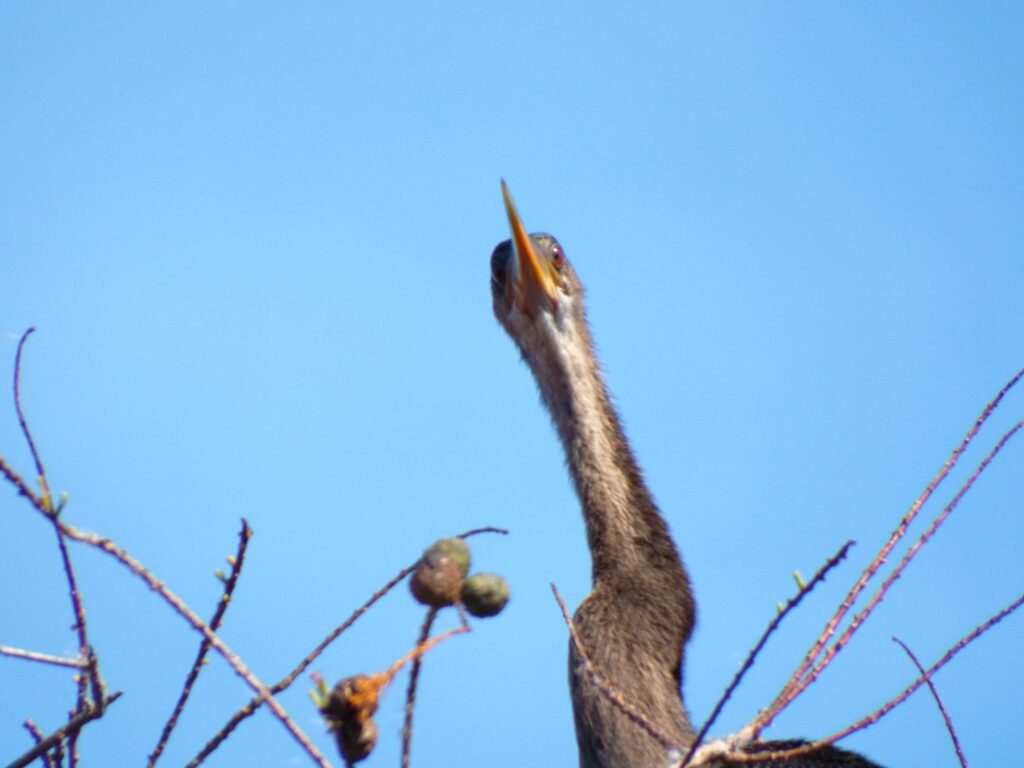
This week for Flora and Fauna Friday, we have a one of a kind, snake-necked, needle-nosed, neutrally buoyant bird. Today we’re gawking at the Anhinga (Anhinga anhinga) family Anhingidae. Also known as the American Darter, Snake-bird, or Water-Turkey. The word “Anhinga” comes from a native Brazilian dialect and means snake/devil bird.
Anhingas are weird, but in a good way. The Anhinga is found throughout much of South America and the coastal plain of the southern US. They’re most closely related to Cormorants and Gannets. Anhingas have a long neck, fan-like tail, webbed feet, and large wings. Their feathers are a deep-brown or black on the body, silvery-gray and black through the wing, and a creamy-tan on the throat and chest. During breeding season, males turn jet black throughout with blonde highlights on their crown and a turquoise eyespot. When soaring through the sky, they can resemble Bald Eagles from a distance. Anhingas are piscivorous. They hunt and eat only fish. Their bodies are very well adapted for this lifestyle and it’s also what makes them as weird as they are.
Anhingas are the spear-fishermen of the bird world and everything about them is suited to that task. Their eyes face forward, giving them great binocular vision. Their bill is needle-like, perfect for poking clear through a Bass. Their neck is long and S-curved, allowing them to speedily spear fish. They have a stretchy, membranous throat that aids in swallowing fish. Their feet are wide and webbed, providing rapid propulsion and course correction. Their tail is long and broad, working like a stabilizing fin to adjust pitch and prevent roll. Most interestingly of all, their feathers don’t repel water. Water does not run off this odd duck’s back. Most aquatic birds have a hydrophobic coating to their feathers that traps an insulating layer of air beneath them. This makes a bird buoyant and keeps it warm and dry in cold water. Fighting against buoyancy is exhausting work and it makes a bird less stealthy and impairs agility. In contrast, the Anhinga forgoes this approach entirely. Their feathers wick up water and don’t hold any air. This can make their feathers look more like fur than feathers. It’s also how they get the name snake bird. Since their bodies sink below the surface of the water, all you can see of a swimming Anhinga is its long serpentine neck craning out of the water. When Anhingas depart the drink to rest and digest, you’ll see them perched, neck outstretched, wings held wide to the sun. They pose this way to allow water to run out of their feathers so their plumage can air dry. Their lack of aquatic insulation means Anhingas are mainly a tropical species. However, they summer here in the southern US and some stay year-round in areas where the water temperatures stay warmer.